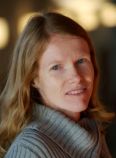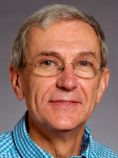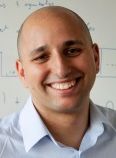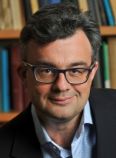Keynote Speakers
Wireless Speech and Audio Communications - A Time Warp
Abstract: From the TV series "Star Trek" it is known, that the "time barrier" can be broken by travelling in a spacecraft equipped with a warp drive. On the basis of the warp travel technology, the audience is taken on a faster-than-light journey back and forth through the evolution of wireless speech and audio communications. Different landmarks will be visited on our sightseeing tour. We start about 30 years ago, and recognize how the feasibility of digital wireless speech and audio communications was proven with pioneering but bulky multi-DSP systems. These early exercises were groundwork for the forthcoming digital mobile radio system GSM. As Moore's law of exponential growth concerning processing speed and memory capacity was expected to be still valid for many years, the engineers were keen to invent more and more complex combinations of sophisticated signal processing and coding algorithms for mobile phones: e.g. multi-microphone speech enhancement, multi-rate speech coding, soft decision source decoding, Turbo error protection, iterative source channel decoding, and last but not least voice controlled operation. The vision of smart phones having the computational power of the supercomputers from the eighties has become reality and exciting applications have been established. However, one astonishing insight is that despite these amazing developments, smartphones nowadays still provide a voice quality which is mostly comparable to the plain old telephone. But there is hope, the recent launch of LTE cellular networks promises new revolutionary steps towards high quality speech and audio communications on the next stage of our journey.
 Bio: Peter Vary received the Dipl.-Ing. degree in electrical engineering from the Technical University of Darmstadt, Germany, in 1972 and the Dr.-Ing. degree from the University of Erlangen-Nuernberg, Germany, in 1978.
In 1980, he joined Philips Communication Industries (PKI), Nuremberg, Germany, where he was in charge of the Digital Signal Processing Group which was involved in the GSM standardization process. Since 1988, he has been a Professor at RWTH Aachen University, Germany, and head of the Institute of Communication Systems and Data Processing.
His main research interests are digital wireless communications, including speech coding, joint source-channel coding, error concealment, and speech enhancement for mobile phones and digital hearing aids.
Peter Vary is a Fellow of the IEEE Signal Processing Society.
Bio: Peter Vary received the Dipl.-Ing. degree in electrical engineering from the Technical University of Darmstadt, Germany, in 1972 and the Dr.-Ing. degree from the University of Erlangen-Nuernberg, Germany, in 1978.
In 1980, he joined Philips Communication Industries (PKI), Nuremberg, Germany, where he was in charge of the Digital Signal Processing Group which was involved in the GSM standardization process. Since 1988, he has been a Professor at RWTH Aachen University, Germany, and head of the Institute of Communication Systems and Data Processing.
His main research interests are digital wireless communications, including speech coding, joint source-channel coding, error concealment, and speech enhancement for mobile phones and digital hearing aids.
Peter Vary is a Fellow of the IEEE Signal Processing Society.
Exploring the brain's activity: a signal and image modeling challenge
Abstract: The living human brain is a tremendously complex organ that modern science is striving to better understand. Electroencephalography (EEG) is an instrument that allows to study it non-invasively, at a macroscopic scale. This talk demonstrates the importance of advanced signal and image modeling for interpreting EEG datasets. Typically, such datasets consist of multi-trial and multi-sensor signals, corrupted by very strong noise. The challenge is especially difficult because of a general lack of ground truth information. The talk will describe recent developments in this field and their usage in clinical and cognitive neuroscientific research.
 Bio: Maureen Clerc received the PhD degree in applied mathematics from Ecole Polytechnique, France in 1999, and visited Stanford Statistics Department in 2000. She joined Ecole des Ponts in 2001, received the habilitation from University Nice Sophia Antipolis in 2007, and was awarded a research director position at Inria in Sophia Antipolis in 2009. Her research combines mathematics and computer science to extract dynamic information from the living human brain. This interdisciplinary research is performed in close interaction with clinical partners from Marseille and Nice University hospitals. She has set up an electroencephalography laboratory for developing Brain Computer Interfaces, notably through a French National Research Agency grant which she coordinated (CoAdapt 2009-2014). She serves on the Editorial Board of Biomedical Engineering OnLine, and of the ISTE-Wiley book series.
Bio: Maureen Clerc received the PhD degree in applied mathematics from Ecole Polytechnique, France in 1999, and visited Stanford Statistics Department in 2000. She joined Ecole des Ponts in 2001, received the habilitation from University Nice Sophia Antipolis in 2007, and was awarded a research director position at Inria in Sophia Antipolis in 2009. Her research combines mathematics and computer science to extract dynamic information from the living human brain. This interdisciplinary research is performed in close interaction with clinical partners from Marseille and Nice University hospitals. She has set up an electroencephalography laboratory for developing Brain Computer Interfaces, notably through a French National Research Agency grant which she coordinated (CoAdapt 2009-2014). She serves on the Editorial Board of Biomedical Engineering OnLine, and of the ISTE-Wiley book series.
Hidden Relations in Data - A Signal Processing on Graphs Approach
Abstract: Data is no longer simply time series or images. Data is now collected in large amounts from social, economic, bio among many other domain applications. The data is generated by agents - for simplicity, referred to as the data spatial structure, and over time. Often, the hidden relations among data are not apparent and need to be uncovered. We will present methods to model and then determine the underlying graph capturing the causal relations among data. We illustrate the method with data collected to study the brain connectivity as well as to several other datasets. Work with Aliaksei Sandryhaila and Jonathan Mei.
 Bio: José M. F. Moura is the Philip L. and Marsha Dowd University Professor at CMU, with interests in data science. A sequence detector of two of his patents (co-inventor Kavcic) is found in 2.4 billion disk drives of 60% of all computers sold worldwide in the last 10 years. He cofounded SpiralGen that commercializes the Spiral technology (www.spiral.net). He was elected 2016 IEEE VP for Technical Activities and served as IEEE Board Director, President of the IEEE Signal Processing Society (SPS), and Editor in Chief for the Transactions on SP. Moura received the IEEE SPS Technical Achievement Award and Society Award. He is a Fellow of the IEEE, a Fellow of AAAS, a corresponding member of the Academy of Sciences of Portugal, and a member of the US National Academy of Engineering.
Bio: José M. F. Moura is the Philip L. and Marsha Dowd University Professor at CMU, with interests in data science. A sequence detector of two of his patents (co-inventor Kavcic) is found in 2.4 billion disk drives of 60% of all computers sold worldwide in the last 10 years. He cofounded SpiralGen that commercializes the Spiral technology (www.spiral.net). He was elected 2016 IEEE VP for Technical Activities and served as IEEE Board Director, President of the IEEE Signal Processing Society (SPS), and Editor in Chief for the Transactions on SP. Moura received the IEEE SPS Technical Achievement Award and Society Award. He is a Fellow of the IEEE, a Fellow of AAAS, a corresponding member of the Academy of Sciences of Portugal, and a member of the US National Academy of Engineering.
Mathematical Scientific Challenges of 5G
Abstract: The evolution of cellular networks is driven by the dream of ubiquitous wireless connectivity: Any data service is instantly accessible everywhere. With each generation of cellular networks, we have moved closer to this wireless dream; first by delivering wireless access to voice communications, then by providing wireless data services, and recently by delivering a WiFi-like experience with wide-area coverage and user mobility management. The support for high data rates has been the main objective in recent years, as seen from the academic focus on sum-rate optimization and the efforts from standardization bodies to meet the peak rate requirements specified in IMT-Advanced. In contrast, a variety of metrics/objectives are put forward in the technological preparations for 5G networks: higher peak rates, improved coverage with uniform user experience, higher reliability and lower latency, better energy efficiency, lower-cost user devices and services, better scalability with number of devices, etc. These multiple objectives are coupled, often in a conflicting manner such that improvements in one objective lead to degradation in the other objectives. Hence, the design of future networks calls for new optimization tools that properly handle the existence and tradeoffs between multiple objectives.
 Bio: Mérouane Debbah entered the Ecole Normale Supérieure de Cachan (France) in 1996 where he received his M.Sc and Ph.D. degrees respectively. He worked for Motorola Labs (Saclay, France) from 1999-2002 and the Vienna Research Center for Telecommunications (Vienna, Austria) until 2003. From 2003 to 2007, he joined the Mobile Communications department of the Institut Eurecom (Sophia Antipolis, France) as an Assistant Professor. Since 2007, he is a Full Professor at CentraleSupelec (Gif-sur-Yvette, France). From 2007 to 2014, he was the director of the Alcatel-Lucent Chair on Flexible Radio. Since 2014, he is Vice-President of the Huawei France R&D center and director of the Mathematical and Algorithmic Sciences Lab. His research interests lie in fundamental mathematics, algorithms, statistics, information & communication sciences research. He is an Associate Editor in Chief of the journal Random Matrix: Theory and Applications and was an associate and senior area editor for IEEE Transactions on Signal Processing respectively in 2011-2013 and 2013-2014. Mérouane Debbah is a recipient of the ERC grant MORE (Advanced Mathematical Tools for Complex Network Engineering). He is a IEEE Fellow, a WWRF Fellow and a member of the academic senate of Paris-Saclay. He is the recipient of the Mario Boella award in 2005, the 2007 IEEE GLOBECOM best paper award, the Wi-Opt 2009 best paper award, the 2010 Newcom++ best paper award, the WUN CogCom Best Paper 2012 and 2013 Award, the 2014 WCNC best paper award, the 2015 ICC best paper award as well as the Valuetools 2007, Valuetools 2008, CrownCom2009 , Valuetools 2012 and SAM 2014 best student paper awards. In 2011, he received the IEEE Glavieux Prize Award and in 2012, the Qualcomm Innovation Prize Award. In 2015, he received jointly the 2015 IEEE Communications Society Leonard G. Abraham Prize and 2015 IEEE Communications Society Fred W. Ellersick Prize. He is the co-founder of the start-up Ximinds.
Bio: Mérouane Debbah entered the Ecole Normale Supérieure de Cachan (France) in 1996 where he received his M.Sc and Ph.D. degrees respectively. He worked for Motorola Labs (Saclay, France) from 1999-2002 and the Vienna Research Center for Telecommunications (Vienna, Austria) until 2003. From 2003 to 2007, he joined the Mobile Communications department of the Institut Eurecom (Sophia Antipolis, France) as an Assistant Professor. Since 2007, he is a Full Professor at CentraleSupelec (Gif-sur-Yvette, France). From 2007 to 2014, he was the director of the Alcatel-Lucent Chair on Flexible Radio. Since 2014, he is Vice-President of the Huawei France R&D center and director of the Mathematical and Algorithmic Sciences Lab. His research interests lie in fundamental mathematics, algorithms, statistics, information & communication sciences research. He is an Associate Editor in Chief of the journal Random Matrix: Theory and Applications and was an associate and senior area editor for IEEE Transactions on Signal Processing respectively in 2011-2013 and 2013-2014. Mérouane Debbah is a recipient of the ERC grant MORE (Advanced Mathematical Tools for Complex Network Engineering). He is a IEEE Fellow, a WWRF Fellow and a member of the academic senate of Paris-Saclay. He is the recipient of the Mario Boella award in 2005, the 2007 IEEE GLOBECOM best paper award, the Wi-Opt 2009 best paper award, the 2010 Newcom++ best paper award, the WUN CogCom Best Paper 2012 and 2013 Award, the 2014 WCNC best paper award, the 2015 ICC best paper award as well as the Valuetools 2007, Valuetools 2008, CrownCom2009 , Valuetools 2012 and SAM 2014 best student paper awards. In 2011, he received the IEEE Glavieux Prize Award and in 2012, the Qualcomm Innovation Prize Award. In 2015, he received jointly the 2015 IEEE Communications Society Leonard G. Abraham Prize and 2015 IEEE Communications Society Fred W. Ellersick Prize. He is the co-founder of the start-up Ximinds.
Beyond Compressed Sensing: The Effectiveness of Convex Programming in the Information and Physical Sciences
Abstract: This talk discusses three concrete problems characterized by incomplete information about an object of interest. The first is the century-old phase retrieval problem where intensity-only measurements - phase information is completely missing - are available about an image as in X-ray crystallography, and we wish to recover the phase. The second is the super-resolution problem where one can only observe the low-frequencies of a signal and/or image due to physical laws, and wish to recover the high-end of its spectrum as to 'beat' the diffraction limit'. The third is a problem in data analysis and computer vision, where we observe only a few entries in a data matrix - for instance users' preferences for a collection of items - which may have been further corrupted, and we wish to infer reliably all the missing and corrupted entries. To retrieve what seems lost, we describe three simple solutions with a common theme, namely, the use of ideas from convex programming. We present some theory explaining when one can and cannot expect these methods to provide accurate answers, as well as some applications.
 Bio: Emmanuel Candès is the Barnum-Simons Chair in Mathematics and Statistics, and professor of electrical engineering (by courtesy) at Stanford University. Up until 2009, he was the Ronald and Maxine Linde Professor of Applied and Computational Mathematics at the California Institute of Technology. His research interests are in applied mathematics, statistics, information theory, signal processing and mathematical optimization with applications to the imaging sciences, scientific computing and inverse problems. Candès graduated from the Ecole Polytechnique in 1993 with a degree in science and engineering, and received his Ph.D. in statistics from Stanford University in 1998.
Bio: Emmanuel Candès is the Barnum-Simons Chair in Mathematics and Statistics, and professor of electrical engineering (by courtesy) at Stanford University. Up until 2009, he was the Ronald and Maxine Linde Professor of Applied and Computational Mathematics at the California Institute of Technology. His research interests are in applied mathematics, statistics, information theory, signal processing and mathematical optimization with applications to the imaging sciences, scientific computing and inverse problems. Candès graduated from the Ecole Polytechnique in 1993 with a degree in science and engineering, and received his Ph.D. in statistics from Stanford University in 1998.
